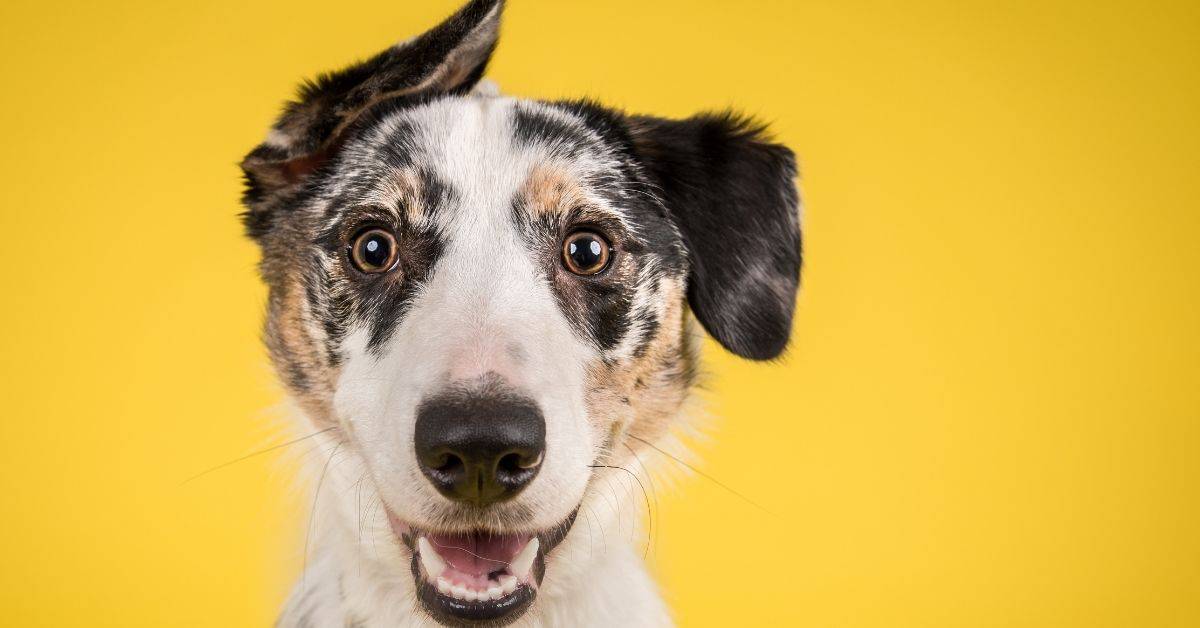We all want a happy dog – don’t we?
Dogs cannot communicate with us in the same way as humans, so it can be challenging to tell when they are having fun and if we have happy dogs.
Dog happiness can be seen in dog’s behavior and the whole body.
Some dogs may also be so laid back that they never seem happy, despite their subtle signals that they adore the life you provide for them.
In this article, you’ll learn13 signs of a happy dog to understand your dogs body language and if your dog is happy or not.
Healthy Appetite
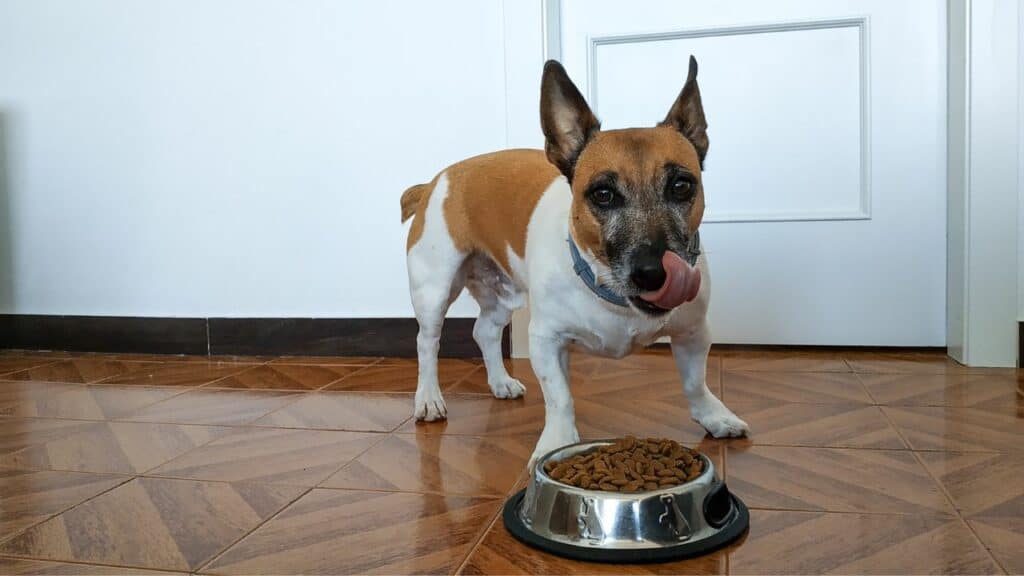
A dog eager to eat typically feels content, happy, and healthy.
If your canine friends refuse to eat or has a diminished appetite, it could be a sign that they’re not feeling well or experiencing anxiety or stress.
It might even be a more severe condition like a disease. If your dog isn’t eating like usual, visit a vet.
Seem At Ease And Composed
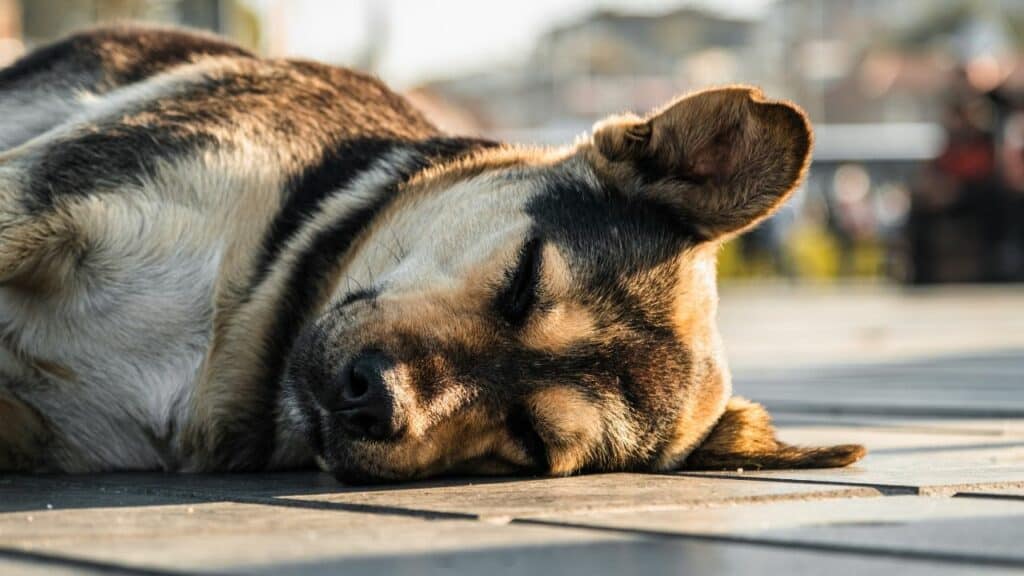
Another indication that your canine companion is happy is when they have a calm body language and are a generally calm, relaxed, and particularly chill dog.
Healthy, happy dogs, may sleep up to 16 hours daily.
It may indicate stress or illness if your dog isn’t sleeping much.
Proper Behavior
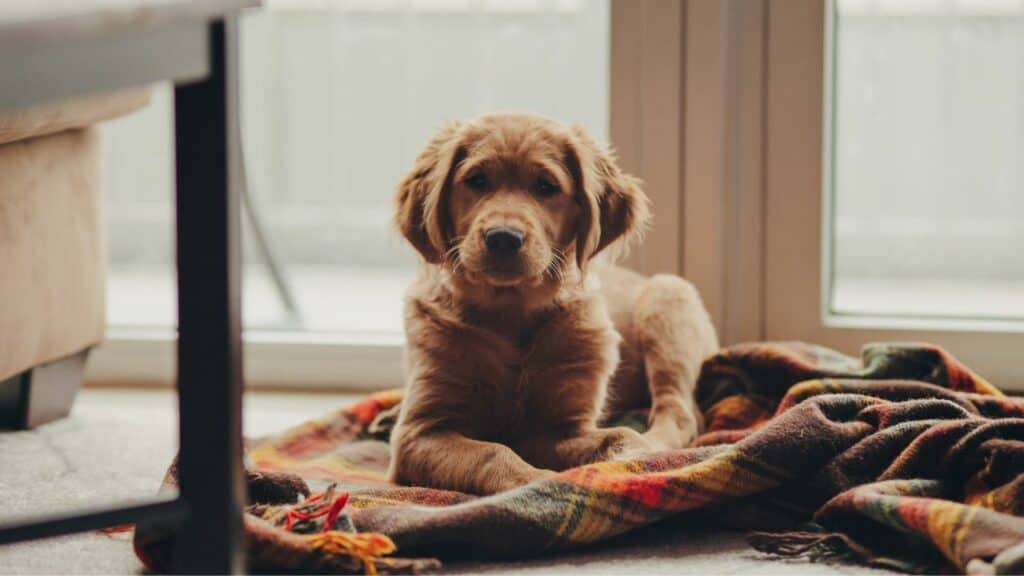
Dogs acting violently or destructively, such as tearing up carpet, show aggressive manner or furniture, growling, or biting, are typically stressed, anxious, or bored.
Dogs use destructive behavior or aggressive behaviors if they are unhappy.
Some dogs experience severe separation anxiety when left alone without their owners and may chew to relax.
Dogs, particularly those with unattended energy and a wriggling dog, may also chew when bored.
To burn off some energy, your dog probably needs more play, exercise, and physical activity.
On the other hand, a well-behaved dog is a sign of happiness.
However, this rule is not always valid.
While some dog breeds are more aggressive than others, young puppies who are teething often chew on objects to soothe their teeth and soothe sore gums.
However, a dog with good manners and behavior is typically happy.
How The Fur Looks
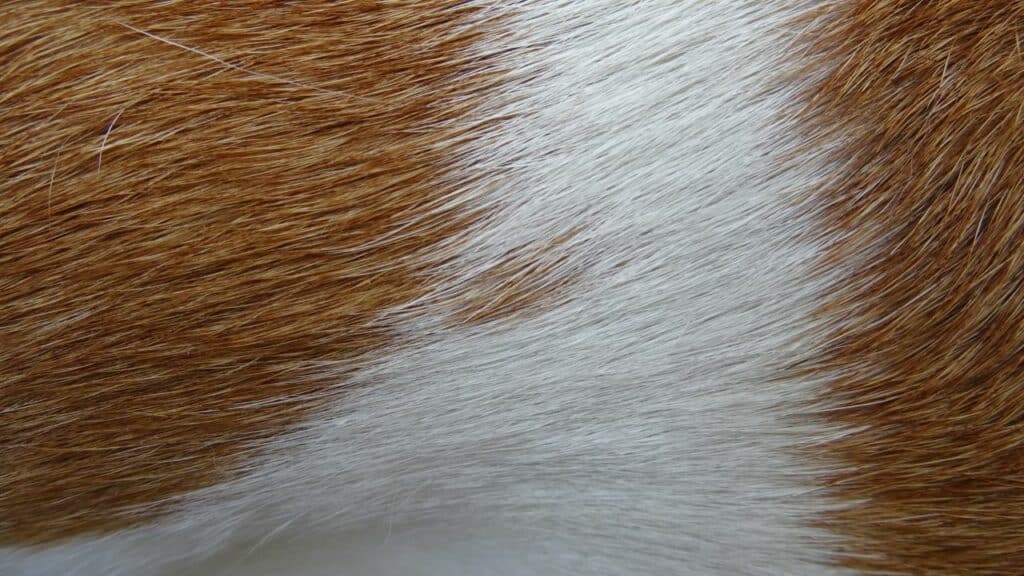
A dog’s fur gives insight into its well-being and state of mind.
A dog in good health and without any emotional or environmental stress will have a shiny, clean coat.
Unhappy dogs will have wild fur and a messy appearance.
They might even begin to skip their daily grooming ritual.
Additionally, their skin may occasionally look flaky.
Consult your veterinarian if this occurs to your dog because it might indicate a medical problem.
The Play Bow
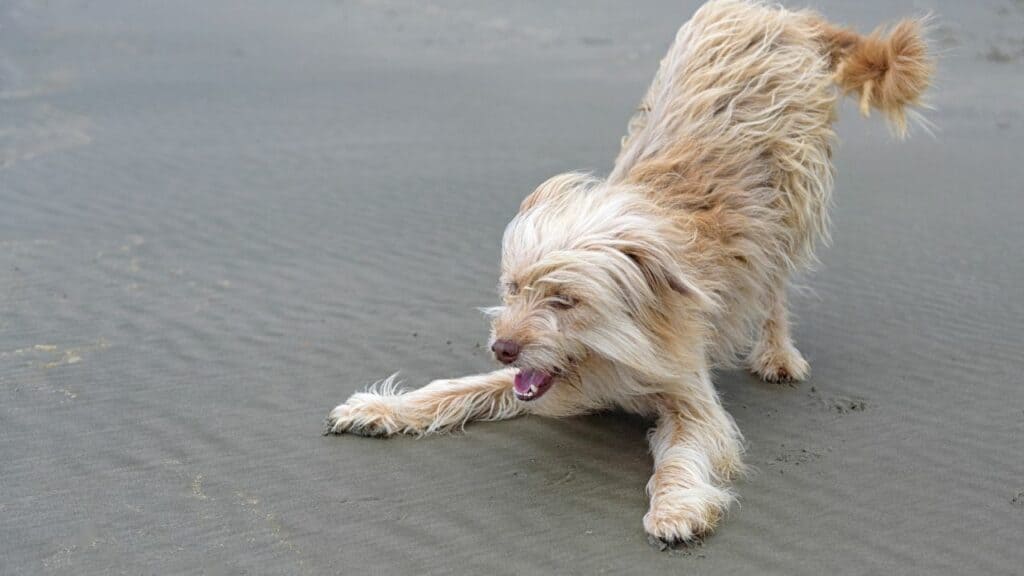
A play bow is a type of dog body language.
It’s a way for dogs to communicate with humans and other animals.
It’s essentially your dog’s way of saying, “Let’s play, it’s play time!”
The play bow is when a dog stretches its front legs out in front, leaning down on its elbows.
This lowers the dog’s chest to the ground as if it is about to lie down, but the tail remains up in the air.
It’s usually accompanied by a big doggie grin and maybe a little bark.
Happy dogs are frequently playful.
Dogs need to be carefree and at ease to enjoy playing.
They often won’t play much if they are anxious or in pain.
They might stumble over to a ball to play with it, but they’ll drop it immediately and return to what they were doing.
Even though your dog may be in pain or feeling unwell if they aren’t interested in playing, just because they aren’t being playful doesn’t necessarily indicate that they are content.
Many dog breeds simply lack playfulness or maybe too relaxed to engage in vigorous activities.
Happy To See You
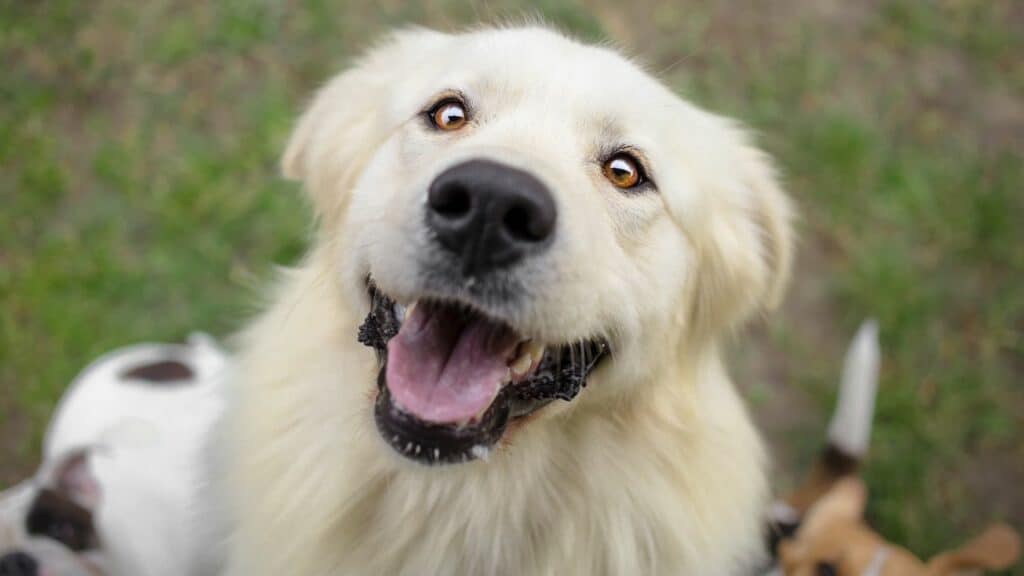
Another sign your dog is happy is the excitement and enthusiasm they get when you come home.
A happy dog will look forward to seeing you and greeting you when you return home, you then can see the happiness in the happy dog’s whole body.
Your furry friend will be waiting for you all day, and we’ll look for you to play with them and enjoy your company.
Keeping that in mind, remember that a happy dog gets excited about things like dinner, playing outside, or whatever they enjoy
To express their excitement, some dogs will also hop or bounce, which can appear to be dancing.
Leaning Against You
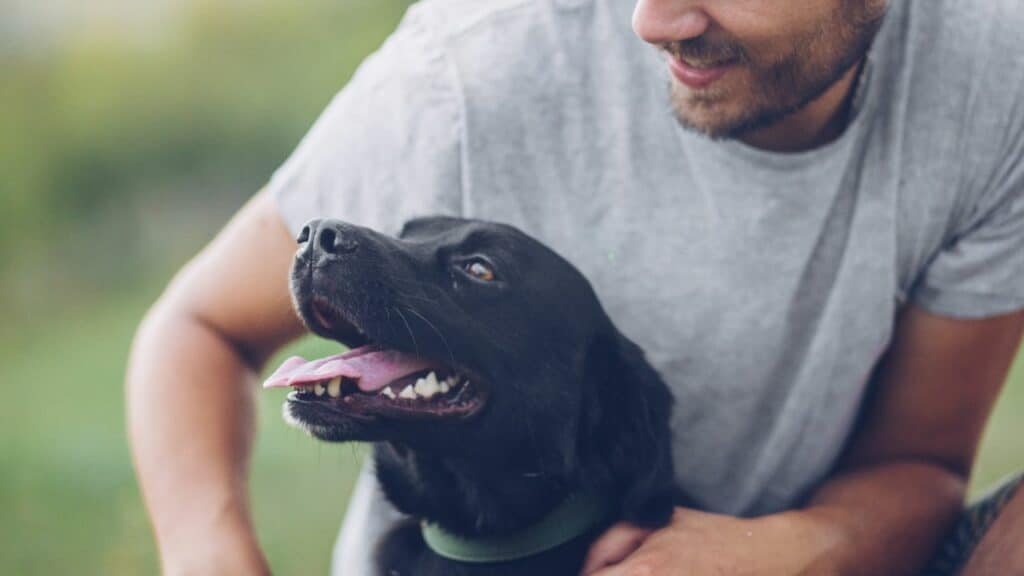
Dogs that are content make a lot of body contact.
If your dog reacts, he will remain nearby or even lean closer to you.
This can be also a sign that your dog loves you as well as your dog is happy.
That is a definite sign that your dog adores and is having fun around you.
Put another way; your dog is content to be with you.
If your dog is upset about something or someone, they may try to flee the scene or move to a different location if they can.
They may even try to turn their heads away from the offending party.
Shows Its Belly
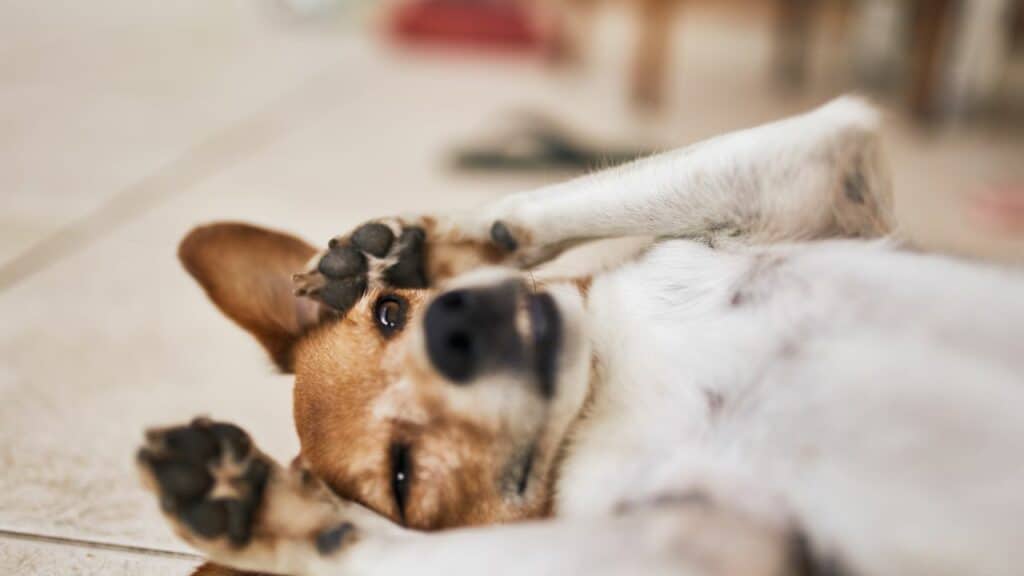
Dogs who show their bellies are highly exposed.
They are content when your dog rolls on his back over and displays its belly next to you.
Asking for belly rubs demonstrates security, satisfaction, and trust.
Your dog’s body is at ease.
A sure sign of happiness is anticipating a hand to pet them or play with them.
Laid-back Demeanor
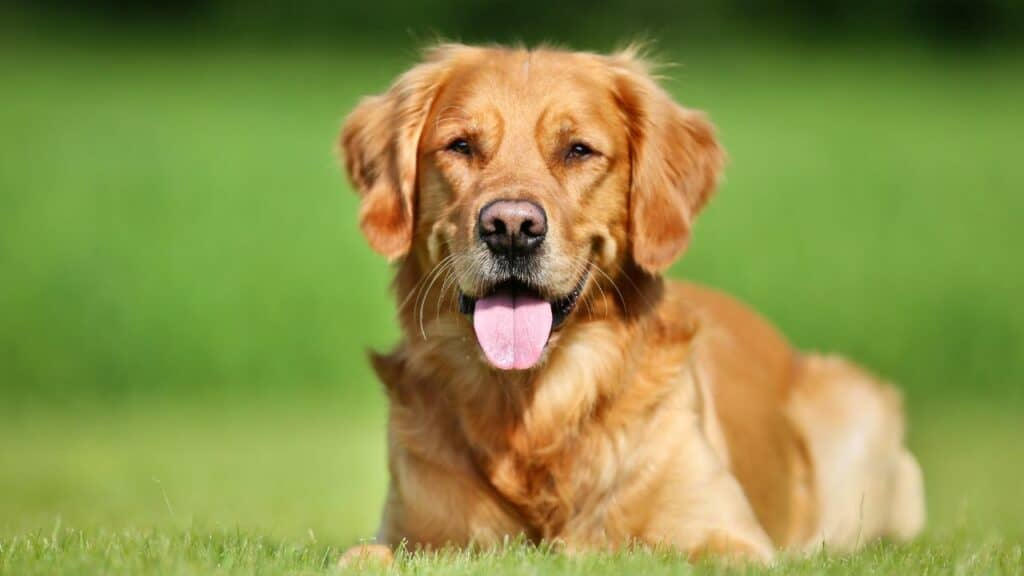
When a dog is joyful, its tail and entire body will appear relaxed and frequently wiggle.
A dog in a good mood may even wag their tail.
Canines that are content will also seem to smile.
Their mouth will be soft and at ease, and even though some teeth might be visible, they won’t be in an aggressive way.
A relaxed tongue is another indication that your dog is content.
They Embrace You And Cuddle
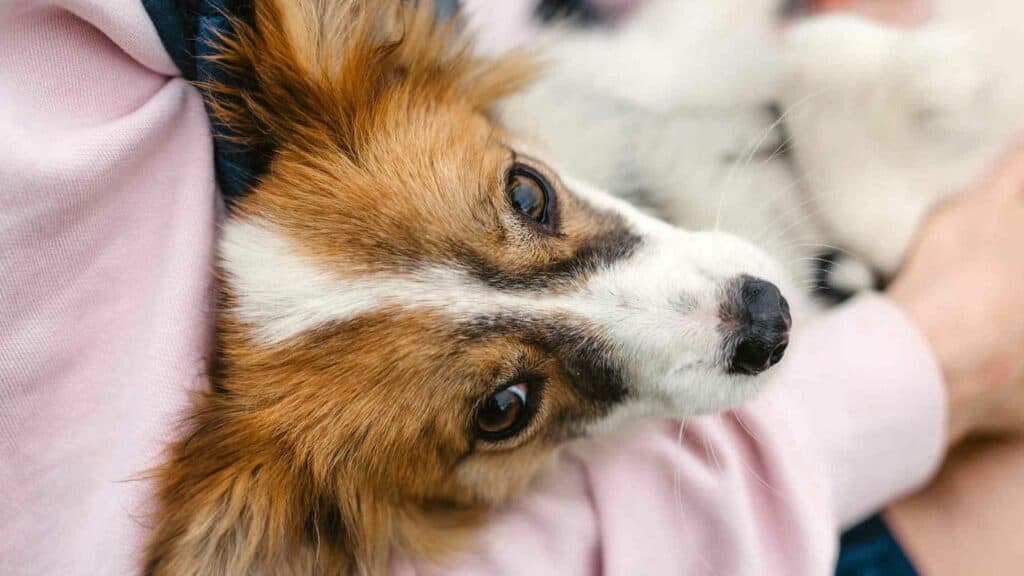
Your dog demonstrates that they are content if they curl up next to you.
Dogs are pack animals and prefer to sleep next to people, other dogs, or animals with whom they have a strong bond.
A content dog will seek your attention and want to spend time with you and your family.
They act this way because they enjoy being around you and want to be close to you.
On that note, keep in mind that personality variations need to be taken into account and that some dogs are more independent than others.
Hopping
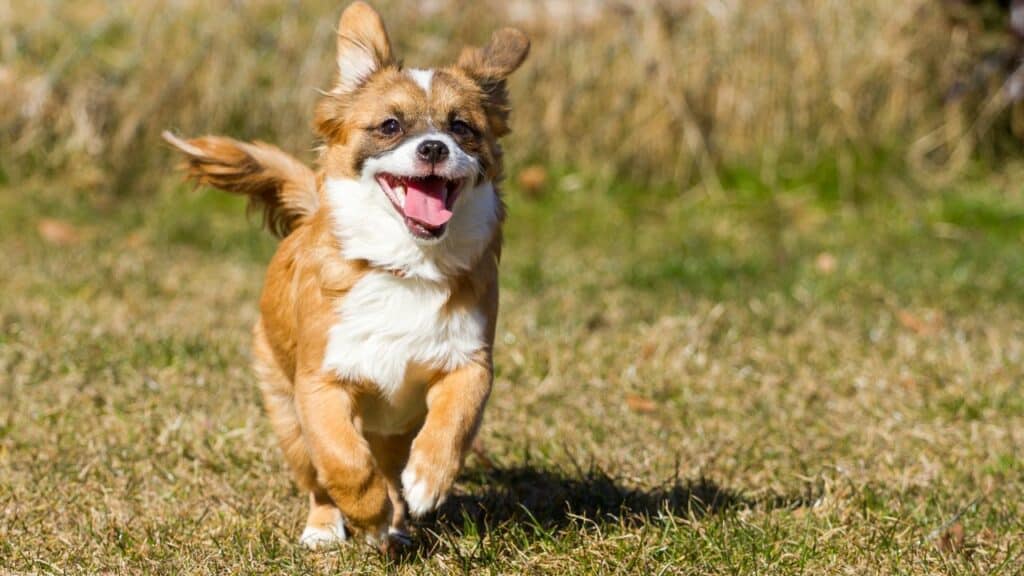
Have you ever noticed that your pet starts to hop when you get home from a long day?
When playing or when they are pleased, dogs will do this.
Your dog is simply overjoyed about the current situation and cannot contain its joy.
Your dog always directs his gaze toward you.
Eye Contact
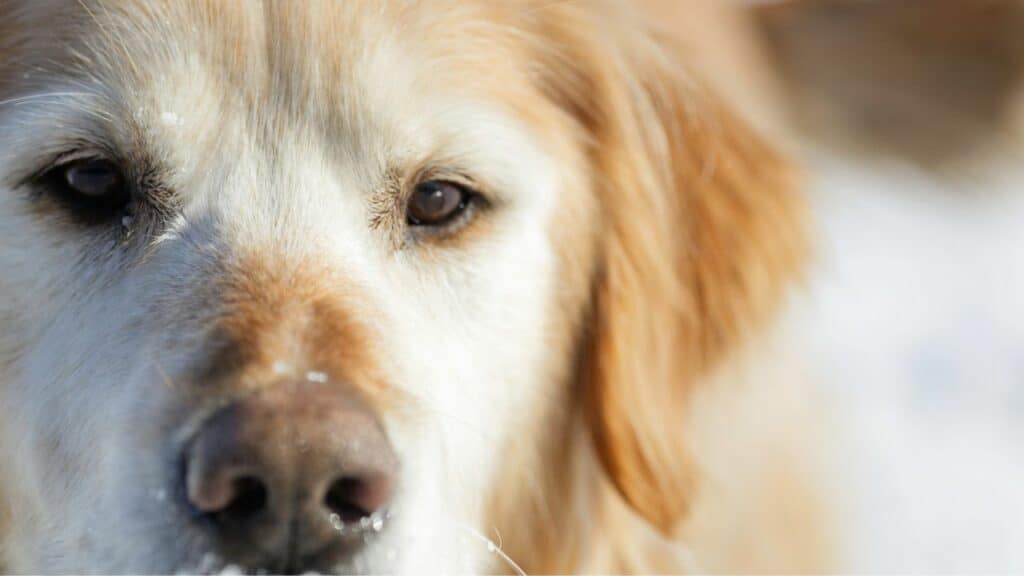
That loving gaze you two share while lounging on the couch together undoubtedly indicates your dog’s happiness because soft eye contact is a crucial indicator of trust in dogs.
Dogs will also look you in the eye to see if you’re as happy as they are and to check in with you.
Your dog makes an effort to follow the rules.
Like an insulin-dependent child, stubbornness in dogs can signify distress or rage.
When they’re getting mad, dogs will purposefully disregard your commands as well.
Your dog may stop responding to you if you ask them to sit or roll over when you know they can if they are upset with you or something in their environment.
Some people mistakenly believe that training a dog is all about the dog, but it’s really about the relationship formed between the two parties.
A dog is less likely to take to training effectively if they don’t trust its owner.
Wagging Tail
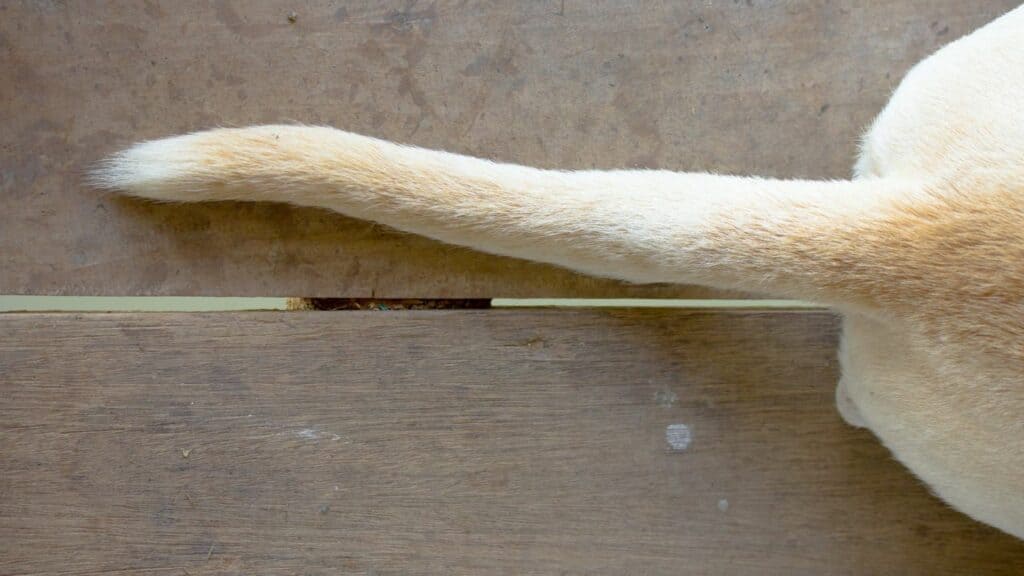
Excellent emotional indicators include a waggy tail.
A dog strolling with a gentle tail flick is calm and content.
But don’t be fooled into thinking that a very waggy seat always means something positive.
Pet parents often mistakenly believe their dog is happy when its tail wags wildly, but a tail wag can also mean something else.
However, if your dog is anxious, the bottom is simply a sign that the dog is aroused, which is not a good state of affairs.
Studies have shown that dogs who favor the left-hand wag are extremely content.
When you play with them, your dog laughs.
Although it doesn’t sound the same, dogs can laugh just like people.
Dogs laugh when they are pleased; this sound is called play panting.
Researchers studying animals found that play painting has a different frequency from regular painting, leading them to discover the sound.
Researchers in an observation room played dog laughter sounds over a loudspeaker for dogs.
They would reach for a toy and scan the area for the laughing playmate.
Interestingly, researchers have discovered that this laughing noise also appears to influence other dogs’ behavior.
Before You Go…
Now you know the signs of a happy dog.
If you want to learn more, read the following articles too!

